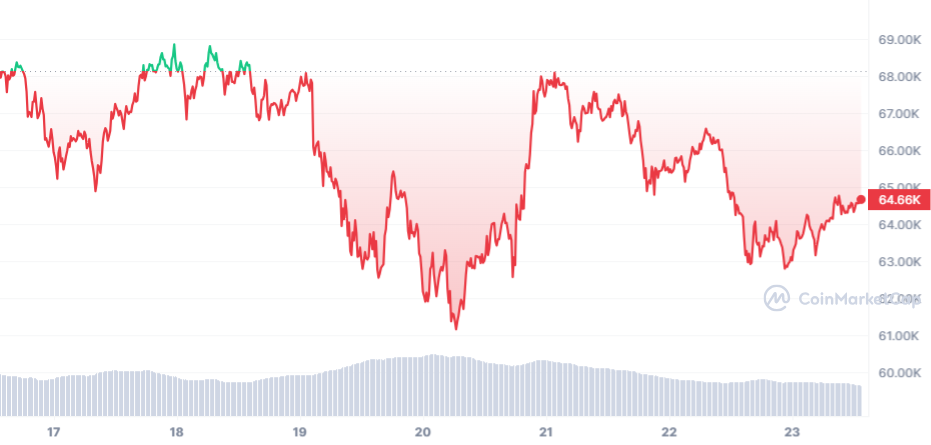Spot bitcoin ETFs listed on U.S. exchanges are gearing up for their first week of experiencing more money flowing out than in since late January.

Crypto markets remained highly volatile on Friday, with bitcoin (BTC) dropping below $63,000 at one point after hovering around $67,000 just hours earlier. Though it has seen a slight recovery, the current price sits at $64,000, marking a 3.7% decrease over the past day. This sell-off had a ripple effect across the market, with Solana’s token (SOL) taking a particularly hard hit, declining by more than 10% at one stage.
Bitcoin’s sharp decline from its recent all-time high above $73,000 over a week ago initiated a corrective phase for crypto assets. Despite a 10% rally on Wednesday following a dovish stance from the Federal Reserve, recent price movements suggest a slower recovery than anticipated.

Mike Novogratz, CEO of Galaxy Digital, shared during a panel discussion at Bitcoin Investor Day in New York that reclaiming the $73,000 mark might take some time.
The weak price performance coincides with four consecutive days of net outflows for U.S.-listed spot bitcoin ETFs. While most funds are still seeing inflows, they haven’t been enough to offset significant outflows from the Grayscale Bitcoin Trust (GBTC). On Thursday alone, GBTC witnessed $359 million flowing out, contributing to $94 million in outflows for the entire fund group. Fidelity’s Wise Origin Bitcoin Fund (FBTC) experienced its lowest daily inflow on record.
This week, spot ETFs have seen over $830 million in outflows, marking their second negative week since late January when BTC corrected to $39,000.
Analysts at Coinbase Institutional suggested that the increased selling of GBTC shares could be partly due to Genesis selling shares as part of its bankruptcy process. Once these sales conclude, ETF inflows might pick up again, especially given favorable macroeconomic conditions and central bank policies.
The analysts also highlighted the conducive macro environment for spot bitcoin ETF inflows following the Federal Reserve’s recent meeting, expecting the current disinflationary trend in the US to persist, financial conditions to ease further, and markets to be supported by the Fed’s quantitative tightening program tapering.
